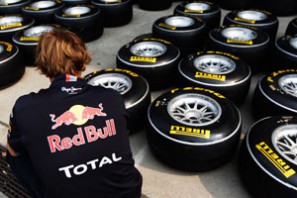It's rewarding mediocrity so every driver wins a prize: Why it should be 'all or nothing' if F1 changes its points system
Given how exclusive and precious a commodity scoring an F1 point is, why is it that mediocrity should be rewarded?

The Formula One season is hardly three months old, but already the sport finds itself embroiled in controversy.
Mercedes and Pirelli are being cast as traitors inside the paddock after the discovery of a secret in-season test taking place last month. The FIA is sending them to motorsport court, and the other teams are baying for their blood.
For Paul Hembery, Pirelli’s motorsport boss, this is the latest in a series of sledges against his work. Pirelli has copped it, pure and simple, from teams and drivers up and down the pit lane, and the mud from this latest round of flinging will take some serious efforts to clean.
Pirelli’s position in Formula One is the definition of being between a rock and a hard place. Brought into the sport in 2011 with the brief to spice up the show, Pirelli has been criticised for producing tyres that degrade too quickly and create too much on-track action, and lambasted for conservative rubber choices that create too little.
The value of manipulated racing by way of tyre selection is beside the point, however. What the past three months have demonstrated is that Pirelli is at serious risk of being driven away from the sport because, quite simply, it has been treated poorly.
Fans and teams alike seem to have forgotten that not all that long ago the sport was at risk of having no sovereign tyre supplier at all. The withdrawal of Bridgestone was sudden, and Pirelli presented itself as the only choice on the table – with the exception of a half-hearted Michelin that wanted no part in the sport’s ‘made to degrade’ tyre formula.
In place of gratitude, the sport has presented vitriol. Cashed-up team owners lampoon Formula One’s credentials as a sport because they believe it to be too contrived. Drivers proclaim to journalists and fans that the tyres are sub-F1 standard, and – if we’re being very generous – stretching the truth by calling them unsafe. Which they certainly aren’t.
Don’t mistake this as call for protectionism, but one for perspective. Formula One is owed nothing by Pirelli, and this tyre bashing serves only as a disincentive for one of the world’s largest tyre companies to continue its involvement.
“If you look at the way this whole tyre situation has evolved, it goes way back to when we had two really great tyre companies in Formula One – Bridgestone and Michelin,” says Peter Windsor, F1 veteran of over twenty years.
“Michelin we should have looked after much better as an industry. We basically kicked them into touch at Indy in ’05 and then they left the following year in disgust.”
“Formula One quite arrogantly thought ‘well that’s no problem, we’ve got Bridgestone, we’ll have them as our monopoly tyre supplier now’.
“And everything was fine – until Bridgestone and the Japanese economy decided that enough was enough, and they pulled out – and suddenly Formula One was left exposed.”
What was then a situation born of economics, Formula One now risks repeating by force. Pirelli’s contract with the FIA expires at the end of this season, and the tyre giant is giving no guarantees that it will be sticking around past its mandate.
Instead, Paul Hembery has been left helpless and frustrated, calling the teams’ lack of agreement on the future of his company “ludicrous”.
“Clearly time really is too late and things are getting, as far as we can see, extremely serious,” explained Hembery. “Because the changes for next year are so substantial that the sport has to make a rapid decision.”
“Maybe we won’t be here [next year] anyway.”
With everything Pirelli’s had to endure, can you blame it for reconsidering its future?
“Formula One came up with this package for Pirelli which said ‘just build tyres that last twenty or thirty laps, take advantage of being in Formula One, spend lots of money on PR and promotion, and we’ll do the rest.’ The only problem is that Formula One isn’t doing the rest,” continues Windsor.
“All the drivers – whether you agree with it or not – should be incredibly positive about Pirelli. It’s not clever for any racing driver at the end of a Grand Prix to say ‘I didn’t enjoy that, I don’t like having to drive a race where I just have to look after the tyres’.
“It’s too late to be saying that, they should’ve been saying that when they were kicking Michelin into touch five years ago.”
And there’s the problem. Formula One has been ungrateful to Pirelli despite their contribution. The sport may act as a great promotional tool for its partners, but when the stars of the game are publicly shaming your work, F1’s value is greatly diminished. That work, it must be repeated, has been completed at the behest of the teams in the first place.
Formula One has brought Pirelli’s tyres into existence, and now appears hell-bent on destroying them. The question, then, is: should the worst come to pass, would another supplier step up to take Pirelli’s place after all the company endured?
Would you?